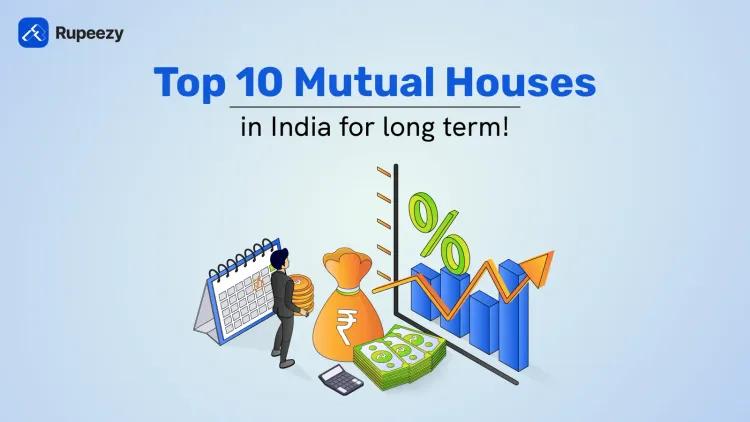Highest Return Mutual Fund in 1 Year 2026


00:00 / 00:00
Investing in mutual funds is an effective way of gaining financial freedom in the long run. It is composed of various stocks and asset classes diversified and highly managed by a fund manager. You can start your investment journey with Rupeezy today, to make hassle-free investments in Mutual Funds
In this article, we will discuss the highest return mutual fund in 1 year in India, and its detailed overview.
Overview of Mutual Funds
A Mutual Fund is an investment avenue, where investors can pool their money and generate wealth on their funds. These funds will be actively managed by a fund manager, who constantly monitors the market and allocates the funds accordingly.
Top 10 Highest Return Mutual Funds in 1 Year
The below list is curated from the specific categories as mentioned in the Rupeezy App. Here is the list of the best mutual funds with the highest return in 1 year:
Mutual Fund | Category | 1 Year Returns |
Small Cap Fund | 41.50% | |
Mid Cap Fund | 57.85% | |
Large Cap Fund | 13.25% | |
Flexi Cap Fund | 32.62% | |
Value Fund | 23.25% | |
Sectoral Fund | 45.42% | |
Multi Cap Fund | 28.28% | |
ELSS Fund | 45.47% | |
Equity Index Fund | 19.45% | |
Focused Fund | 43.06% |
Overview of the Best Mutual Fund with High Returns in 1 Year
1. Bandhan Small Cap Fund
The fund comprises of small-cap stocks with 89.3% holdings in Equity and 10.7% Cash. They have diversified their funds into diverse sectors namely, Financial, Healthcare, Construction, Metals&Minings, Consumer Staples, Energy, Capital Goods, Textiles, and others. These allocations amount to a total fund size of Rs. 7,534.20 Crores.
Fund Overview:
AUM (fund size) - Rs. 7,534.20 Cr
Expense Ratio – 0.35%
Exit Load – 1% (if redeemed within 1 year)
Min. Investment - SIP Rs.100 or Lump Sum Rs. 1000
Risk – Very High
1-year annualised returns - 41.50%
2. Motilal Oswal Midcap Fund
The fund comprises of mid-cap stocks with 78.3% holdings in Equity, 16.4% in Debt and 5.3% in Cash. They have diversified their funds into diverse sectors namely, Technology, Financial, Healthcare, Construction, Metals&Minings, Consumer Discretionary, Capital Goods, Automobile, and others. These allocations amount to a total fund size of Rs. 15,940.06 Crores.
Fund Overview:
AUM (fund size) - Rs. 15,940.06 Cr
Expense Ratio – 0.60%
Exit Load – 1% (if redeemed within 1 year)
Min. Investment - SIP Rs.500 or Lump Sum Rs.500
Risk – Very High
1-year annualised returns - 57.85%
3. Quant Large Cap Fund
The fund comprises of large-cap stocks with 91.2% holdings in Equity, 6.6% in Debt and 2.2% in Cash. They have diversified their funds into diverse sectors namely, Technology, Financial, Healthcare, Consumer Staples, Chemicals, and others. These allocations amount to a total fund size of Rs. 2,179.33 Crores.
Fund Overview:
AUM (fund size) - Rs. 2,179.33 Cr
Expense Ratio – 0.54%
Exit Load – 1% (if redeemed within 15 days)
Min. Investment - SIP Rs. 1000 or Lump Sum Rs.5000
Risk – Very High
1-year annualised returns - 13.25%
4. JM Flexicap Fund
The fund comprises of flexi-cap stocks with 98.5% holdings in Equity and 1.5% in Cash. They have diversified their funds into diverse sectors namely, Financial, Healthcare, Energy, automobile, Capital Goods, and others. These allocations amount to a total fund size of Rs. 4,228.30 Crores.
Fund Overview:
AUM (fund size) - Rs. 4,228.30 Cr
Expense Ratio – 0.41%
Exit Load – 1% (if redeemed within 30 days)
Min. Investment - SIP Rs.100 or Lump Sum Rs.1000
Risk – Very High
1-year annualised returns - 32.62%
5. Quant Value fund
The fund comprises of value-oriented stocks with 90.2% holdings in Equity, 6.8% in Debt and 3.0% in Cash. They have diversified their funds into diverse sectors namely, Financial, Healthcare, Energy, Metals & Mining, Construction, and others. These allocations amount to a total fund size of Rs. 2,119 Crores.
Fund Overview:
AUM (fund size) - Rs. 2,119 Cr
Expense Ratio – 0.45%
Exit Load – 1% (if redeemed within 15 days)
Min. Investment - SIP Rs.1000 or Lump Sum Rs.5000
Risk – Very High
1-year annualised returns - 23.25%
6. LIC MF Infrastructure Fund
The fund comprises of sectoral stocks with 94.8% holdings in Equity and 5.2% in Cash. They have diversified their funds into diverse sectors namely, Chemicals, Financial, Healthcare, Energy, Metals & Mining, Construction, and others. These allocations amount to a total fund size of Rs. 725.10 Crores.
Fund Overview:
AUM (fund size) - Rs. 725.10 Cr
Expense Ratio – 1.38%
Exit Load – 1% (if redeemed within 90 days)
Min. Investment - SIP Rs. 1000 or Lump Sum Rs.5000
Risk – Very High
1-year annualised returns - 45.42%
7. HSBC Multi Cap Fund
The fund comprises of Multi-Cap stocks with 97.8% holdings in Equity and 2.2% in Cash. They have diversified their funds into diverse sectors namely, Technology, Financial, Healthcare, Energy, Metals & Mining, Construction, and others. These allocations amount to a total fund size of Rs. 4,088.38 Crores.
Fund Overview:
AUM (fund size) - Rs. 4,088.38 Cr
Expense Ratio – 0.60%
Exit Load – 1% (if redeemed within 1 year)
Min. Investment - SIP Rs.500 or Lump Sum Rs.5000
Risk – Very High
1-year annualised returns - 28.28%
8. Motilal Oswal ELSS Tax Saver Fund
The fund comprises of 95.9% holdings in Equity, 4.2% in Debt and -0.1% in Cash. They have diversified their funds into diverse sectors namely, Capital goods, Financial, Healthcare, Automobile, Construction, and others. These allocations amount to a total fund size of Rs. 3,983.77 Crores.
Fund Overview:
AUM (fund size) - Rs. 3,983.77 Cr
Expense Ratio – 0.65%
Exit Load – Nil
Min. Investment - SIP Rs.500 or Lump Sum Rs.500
Risk – Very High
1-year annualised returns - 45.47%
9. UTI-Nifty 500 Value 50 Index Fund
The fund comprises of Value-Index stocks with 99.9% holdings in Equity and 0.1% in Cash. They have diversified their funds into diverse sectors namely, Financial, Energy, Metals & Mining, Construction, Chemicals, and others. These allocations amount to a total fund size of Rs. 518.60 Crores.
Fund Overview:
AUM (fund size) - Rs. 518.60 Cr
Expense Ratio – 0.56%
Exit Load – Nil
Min. Investment - SIP Rs.500 or Lump Sum Rs.1000
Risk – Very High
1-year annualised returns - 19.45%
10. Invesco India Focused Fund
The fund comprises Focused-Fund stocks with 97.6% holdings in Equity and 2.4% in Cash. They have diversified their funds into diverse sectors namely, Financial, Energy, Metals & Mining, Construction, Chemicals, Consumer Staples, Technology and others. These allocations amount to a total fund size of Rs. 3080.48 Crores.
Fund Overview:
AUM (fund size) - Rs. 3080.48 Cr
Expense Ratio – 0.58%
Exit Load – 1% (if redeemed within 1 year)
Min. Investment - SIP Rs.500 or Lump Sum Rs.1000
Risk – Very High
1-year annualised returns - 43.06%
Importance of Looking at 1 Year Returns
While selecting a mutual fund to invest it is necessary to look at 1-year returns it is really important due to various reasons such as:
Short-term Performance Indicator: It’s a short-term tracker of how the fund has performed in the past 1 year. It helps the investor analyse the fund’s recent performance and how it has managed under various market conditions, volatility and other trends.
Easy for Comparison: As comparing a fund’s 1-year return provides a benchmark to the investors, it will be easy to compare their peers to understand the fund’s management and performance for a short-term period.
High Market Volatility: The 1-year return will showcase how efficiently a fund has performed under periods of high volatility. For instance, if there was a major economic trend change, and if the fund could still generate positive returns.
Factors Affecting Mutual Fund Performance
Market Conditions: The Net Asset Value (NAV) of mutual funds is influenced by market trends and fluctuations. These can be impacted by the ups and downs of the values of equities, bonds, and other securities.
Fund Manager’s Expertise and Management Style: The Mutual fund’s performance is highly dependent on the fund manager’s knowledge and expertise. If the fund manager makes a wrong decision while choosing the stocks it can affect the overall performance of the fund.
Portfolio Composition and Sector Exposure: One of the key features to achieve a high-performing mutual fund is to diversify its portfolio across various industries and sectors. This helps the fund to perform well even during sector-specific downturns and trend changes.
Historical Performance: Past performance offers insight into fund consistency in providing returns over the years. This gives the investor a comprehensive structure and confidence in the fund’s performance in the long run.
How to Evaluate High Return Funds
Assess Risk-Adjusted Returns: Higher returns are often always associated with high risks, investors can employ certain metrics like the Sharpe ratio to understand the risk-adjusted returns of the funds.
Check Fund Consistency: It is necessary to note the fund’s consistency in providing good returns over different time periods like 1-year, 3-year, and 5-year returns. If the fund provides high returns just for 1 year, it would reflect only a short-term market surge.
Analyse Risk Factors: There are certain associated risks with high returns funds such as market risk, and sector-specific risk. One needs to understand the volatility of the fund’s returns and the fund’s performance during such situations.
Examine Expense Ratio: The expense ratio is a charge that is paid to the fund managers for managing the funds. The returns/profits can be reduced if the fund management fees charged are high. So a high expense ratio fund must be performing well to justify the cost associated with the fund.
Sector Exposure: Often, high-return funds would have significant exposure in specific sectors like technology, defence, etc. Investors must understand whether the fund’s sector allocation aligns with their overall investment plan and risk appetite.
Risk vs Return Analysis in Mutual Funds
When it comes to investing, the risk and return are interlinked. The term ‘risk’ means either the possibility of total or partial loss of investment or uncertainty of returns. On the other hand, ‘return’ is defined as a profit that is made from an investment.
In general, higher potential returns go along with higher levels of risk. Risk and return analysis is a way to evaluate how much money an investment would make compared to its associated risk.
It applies the same way in the case of mutual funds as well, based on the returns each funds offer the associated risk must also be evaluated. This would help the investors make decisions on which investments to choose based on how much risk one would take.
As in the case of bonds or fixed deposits, they provide fixed returns on the investment, which is relatively lower risk thereby implying that even the returns are lower when compared to mutual funds. For investors seeking higher returns, there are certain categories or types in mutual funds, like Large Cap, Mid Cap, and Small Cap, in which for higher risks there will be higher returns.
Risks of Selecting Mutual Funds based on 1 Year Returns
When 1-year returns give a distinct picture of their returns, they also expose themselves to several risks. First, 1-year returns capture performance at a specific point in time, which may not reflect the fund's overall potential or resilience over different market cycles. Additionally, a single year is often too short a period to evaluate the true performance of most funds, especially those that are long-term in nature, such as equity funds.
Short-term returns can mislead investors, as they don't account for the broader market trends or volatility that a fund may experience over time. Therefore, selecting mutual funds based on 1-year returns alone can lead to poor investment decisions, as this approach overlooks the long-term stability, strategy, and risk management of a fund, all of which are crucial for sustained portfolio growth.
Conclusion
In conclusion, while 1-year returns can provide a snapshot of a mutual fund's short-term performance, they should not be the sole factor in investment decisions. It's important to evaluate long-term consistency, risk-adjusted returns, expense ratios, and sector exposure. A well-rounded assessment will help investors align their choices with their financial goals and risk tolerance, ensuring more sustainable portfolio growth.
You can open an account at the Rupeezy app to start your investment journey with us and grow your wealth. For more such informative and interesting articles, check out Rupeezy’s blog page and stay updated with the financial topics.
Check Out These Related Articles |
The content on this blog is for educational purposes only and should not be considered investment advice. While we strive for accuracy, some information may contain errors or delays in updates.
Mentions of stocks or investment products are solely for informational purposes and do not constitute recommendations. Investors should conduct their own research before making any decisions.
Investing in financial markets are subject to market risks, and past performance does not guarantee future results. It is advisable to consult a qualified financial professional, review official documents, and verify information independently before making investment decisions.

All Category









